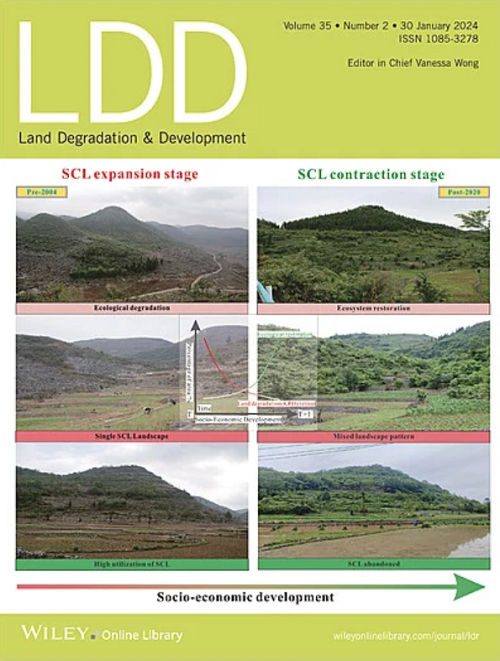Impact of the Water Reservoir and River Engineering Structures on Longitudinal and Transverse (Dis)connectivity Associated With Sediment Transfer
IF 3.6
2区 农林科学
Q2 ENVIRONMENTAL SCIENCES
引用次数: 0
Abstract
Human impact in the form of reservoir construction and river regulation downstream of reservoirs, is causing irreversible alterations to hillslope and river channel connectivity in river catchments. This disruption in the dynamic equilibrium of the river is attributed to sediment accumulation upstream of the reservoir's dam, limited sediment outflow from the reservoir, and increased downcutting downstream of the dam. Consequently, these alterations necessitate further human interference in natural environmental processes through the construction of various river engineering structures designed to reduce the intensity of downcutting. The purpose of the present study was to assess the impact of a small mountain reservoir and additional river regulation structures on the Wapienica River in southern Poland, focusing on the structural and functional connectivity of the river channel in terms of sediment transfer. This assessment was based on erosion and connectivity modeling, as well as field mapping. A high-resolution digital elevation model (HRDEM) was examined in the study along with survey data on suspended sediment accumulation sites along the river. The study utilized open-source tools, including SedInConnect for connectivity index (IC) calculation, and the Soil and Water Assessment Tool (SWAT) for ArcGIS software. It was found that the Wapienica reservoir permanently retains the floating material, making the likelihood of this material flowing out of the reservoir minimal. Within the reverse delta of the reservoir, the entire load of bottom material (sand) is also retained. Thicker bottom material (gravel, boulders) is deposited in the riverbed within the delta, leading to the shallowing of the bed upstream of the delta. These processes disrupt longitudinal connectivity. Six connectivity zones have been identified within the catchment. The first four are situated in the southern part of the catchment: strong connectivity, reduction, concrete channel, and damage area. The remaining two, situated in the northern part are: artificial channel and drainage channels. Each of the six zones is characterized by different sediments and river processes. It was demonstrated that a more detailed and more probably connectivity pattern for hillslopes and river channels may be obtained through the use of several tools and parameters at the same time (i.e., fieldwork, SWAT, IC).求助全文
约1分钟内获得全文
求助全文
来源期刊

Land Degradation & Development
农林科学-环境科学
CiteScore
7.70
自引率
8.50%
发文量
379
审稿时长
5.5 months
期刊介绍:
Land Degradation & Development is an international journal which seeks to promote rational study of the recognition, monitoring, control and rehabilitation of degradation in terrestrial environments. The journal focuses on:
- what land degradation is;
- what causes land degradation;
- the impacts of land degradation
- the scale of land degradation;
- the history, current status or future trends of land degradation;
- avoidance, mitigation and control of land degradation;
- remedial actions to rehabilitate or restore degraded land;
- sustainable land management.
 求助内容:
求助内容: 应助结果提醒方式:
应助结果提醒方式:


